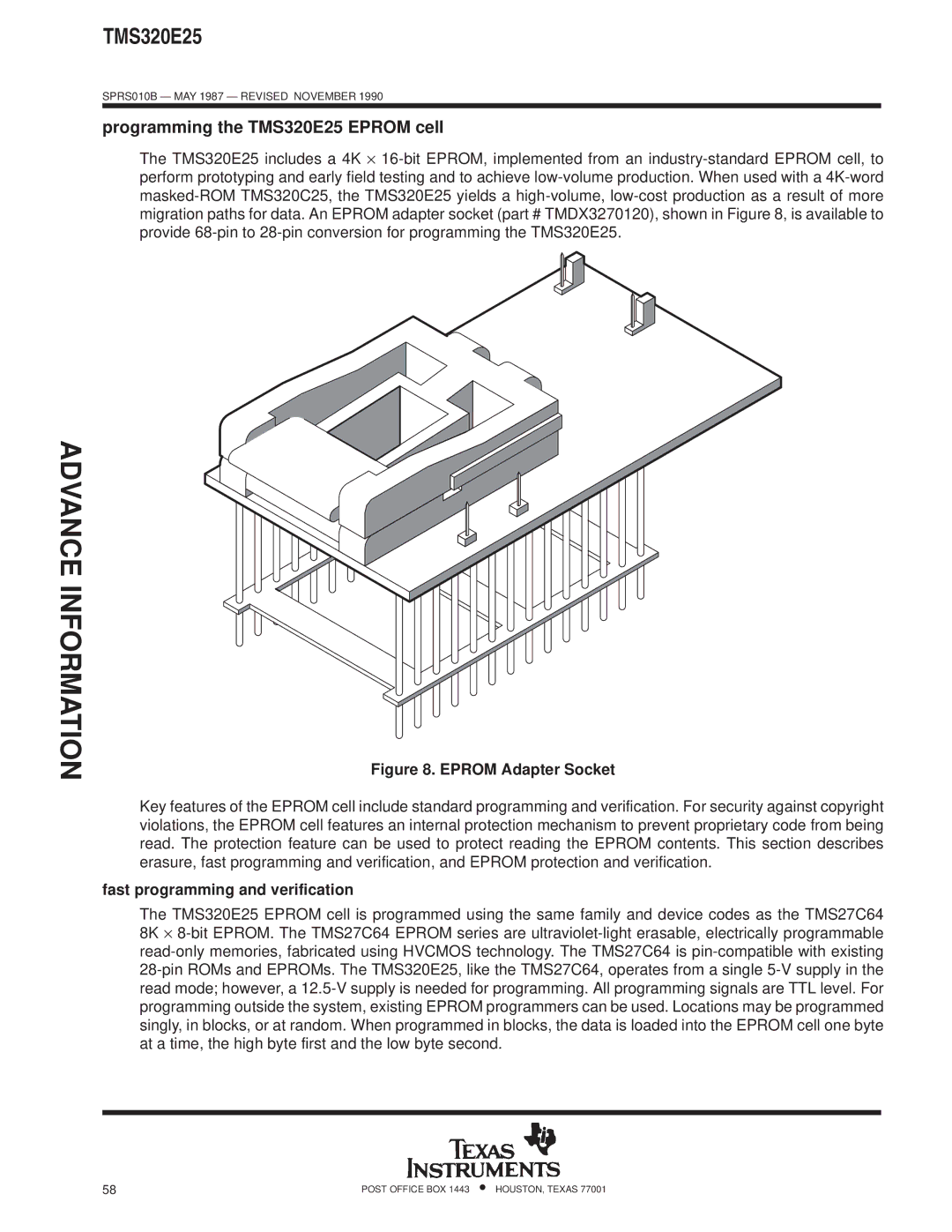
TMS320E25
SPRS010B Ð MAY 1987 Ð REVISED NOVEMBER 1990
programming the TMS320E25 EPROM cell
The TMS320E25 includes a 4K ⋅ 16-bit EPROM, implemented from an industry-standard EPROM cell, to perform prototyping and early field testing and to achieve low-volume production. When used with a 4K-word masked-ROM TMS320C25, the TMS320E25 yields a high-volume, low-cost production as a result of more migration paths for data. An EPROM adapter socket (part # TMDX3270120), shown in Figure 8, is available to provide 68-pin to 28-pin conversion for programming the TMS320E25.
ADVANCE | |
INFORMATION | Figure 8. EPROM Adapter Socket |
|
Key features of the EPROM cell include standard programming and verification. For security against copyright violations, the EPROM cell features an internal protection mechanism to prevent proprietary code from being read. The protection feature can be used to protect reading the EPROM contents. This section describes erasure, fast programming and verification, and EPROM protection and verification.
fast programming and verification
The TMS320E25 EPROM cell is programmed using the same family and device codes as the TMS27C64 8K ⋅ 8-bit EPROM. The TMS27C64 EPROM series are ultraviolet-light erasable, electrically programmable read-only memories, fabricated using HVCMOS technology. The TMS27C64 is pin-compatible with existing 28-pin ROMs and EPROMs. The TMS320E25, like the TMS27C64, operates from a single 5-V supply in the read mode; however, a 12.5-V supply is needed for programming. All programming signals are TTL level. For programming outside the system, existing EPROM programmers can be used. Locations may be programmed singly, in blocks, or at random. When programmed in blocks, the data is loaded into the EPROM cell one byte at a time, the high byte first and the low byte second.
58 | POST OFFICE BOX 1443 • HOUSTON, TEXAS 77001 |

